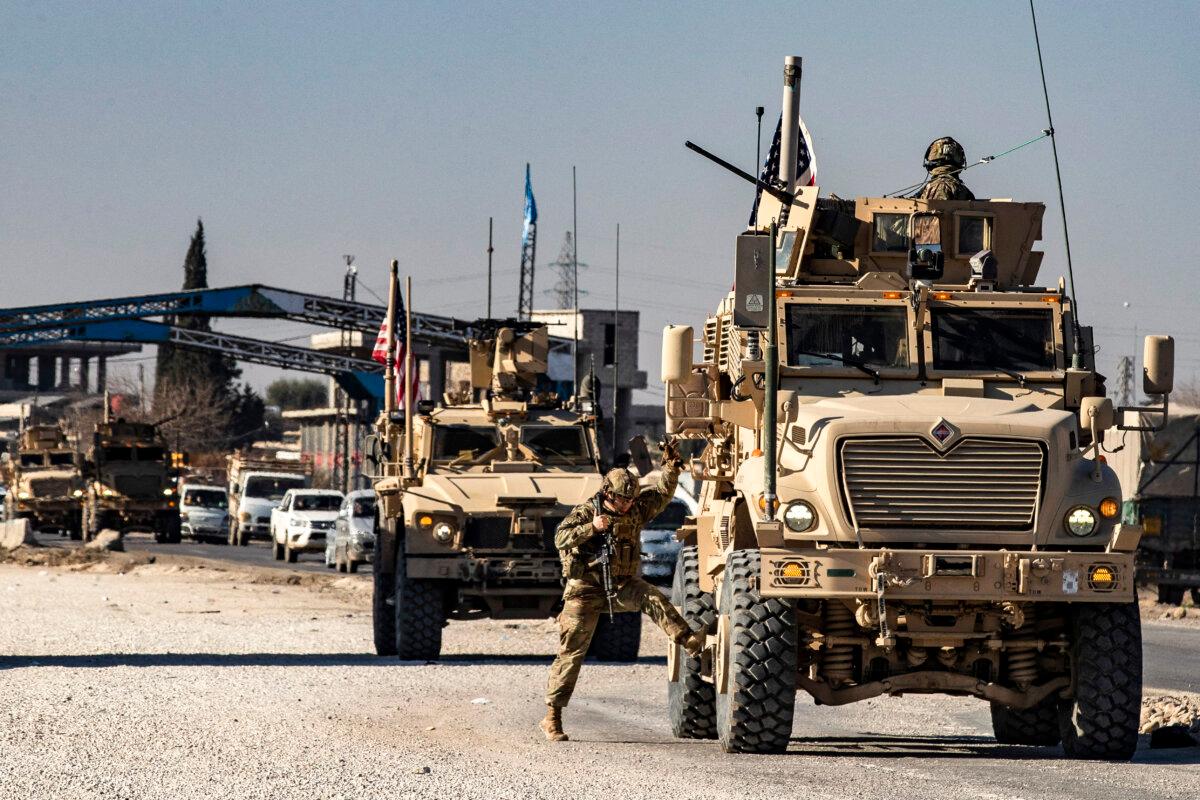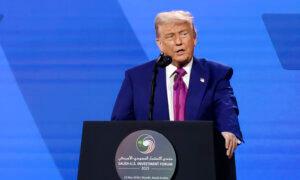Speculation has mounted in recent weeks that the United States plans to withdraw the bulk of its forces from Syria following a decade-long deployment.
It remains unclear how a reduction in U.S. forces would affect Washington’s allies in the region, especially the Kurdish-led Syrian Democratic Forces (SDF), which the United States has armed and supported since 2015.
“This deliberate and conditions-based process will bring the U.S. footprint in Syria down to less than a thousand U.S. forces in the coming months,” Pentagon spokesman Sean Parnell said on April 18.
Since 2015, U.S. troops in northeastern Syria have worked alongside the SDF as part of an international coalition tasked with combating the ISIS terrorist group.
The U.S.-backed SDF now controls most of northeastern Syria, which is home to most of the country’s energy wealth and much of its best agricultural land.
Turkey, meanwhile, views the SDF as a terrorist group due to its close ties with the Kurdistan Workers’ Party, which for decades waged a violent insurgency against the Turkish state.
SDF Hedges Its Bets
Last December, the regime of Syrian President Bashar al-Assad collapsed in the face of a Turkey-backed rebel offensive led by Hezb Tahrir al-Sham (HTS), a militant group with previous ties to Al-Qaeda that remains designated by the United States as a foreign terrorist organization.Since then, Syria’s new interim president, HTS leader Ahmed al-Sharaa, has called for the SDF—and other armed Syrian factions—to be merged into Syria’s state-run security apparatus.
“The new Syrian government wants to unify all the country’s various military and administrative entities,” Oytun Orhan, a Turkish Middle East expert, told The Epoch Times.
“A main challenge facing Damascus is the integration of the SDF into the state security apparatus and for SDF-held areas to be brought under state control,” added Orhan, who specializes in the Levant region at Ankara’s Center for Middle Eastern Studies.

In March, SDF commander Mazloum Abdi met with al-Sharaa in Damascus where they signed an agreement to bring SDF fighters into Syria’s security apparatus.
The deal also called for SDF-held facilities—including border crossings, an airport, and oil and gas fields—to be placed under the control of the central government.
At the time, Abdi hailed the landmark agreement, saying it would afford a “real opportunity to build a new Syria.”
But in terms of implementation, the deal was short on specifics.
“The two sides agreed to pursue a political solution regarding the integration of the SDF and other armed entities into the Syrian state,” Orhan said.
“But it was just an agreement in principle,” he added. “It did not include any details or practical measures as to how this would be implemented.”
For the SDF, the prospect of merging with Syria’s state-run security apparatus serves as a hedge against an anticipated U.S. withdrawal from the region.
Until now, U.S. forces in northeastern Syria have served as a buffer between the Kurdish-led SDF and armed Syrian factions backed by Turkey.
U.S. Secretary of State Marco Rubio hailed the agreement between the SDF and Damascus.
“The United States welcomes the recently announced agreement between the Syrian interim authorities and the Syrian Democratic Forces to integrate the northeast into a unified Syria,” Rubio said in a statement.
He also reaffirmed Washington’s support for a “political transition [in Syria] that demonstrates credible, non-sectarian governance as the best path to avoid further conflict.”
According to Orhan, the United States “wants to resolve the SDF issue because it is considering its options for a possible withdrawal from the region.”
Nevertheless, on May 15, Turkish Foreign Minister Hakan Fidan said the terms of the deal had yet to be implemented.
“We expect these steps to be put into practice,” Fidan said after meeting with Rubio and his Syrian counterpart in Turkey’s southern Antalya province.
“In order for stability to be achieved in Syria, there must be a comprehensive government, a single legitimate armed force,” he told reporters.
According to Ambassador Matthew Bryza, a former White House and senior State Department official, the SDF “has taken a decision—and concrete steps—to integrate its military operations into the new Syrian national army.”
“I don’t think there’s any going back for it in the near term,” Bryza told The Epoch Times.

Call for Regional Autonomy
Hopes for a “single legitimate armed force” in Syria were dealt a blow last month when Syrian Kurdish groups abruptly called for regional autonomy within the framework of a decentralized state.On April 27, hundreds of Kurdish political figures from Syria, Turkey, and northern Iraq met in Syria’s northern town of Qamishli for what was billed as a “Kurdish Unity and Consensus” conference.
“A joint Kurdish political vision has been formulated that expresses … a just solution to the Kurdish issue in Syria as a decentralized democratic state,” the statement read.
It also called for Syria’s constitution to be changed to protect Kurdish national rights.
At the conference, Abdi, the SDF commander, said post-Assad Syria required a new national charter enshrining the principle of “decentralization.”
“We reiterate that we support the territorial integrity of Syria and … that the unity of Kurds is the unity of Syria,” the SDF commander asserted.
Yet despite these assurances, Damascus was quick to reject the call for a decentralized system of government.
“We clearly reject any attempt to impose a partition or create separatist cantons under the terms of ‘federalism’ or ‘self-autonomy’ without a national consensus,” al-Sharaa’s office said in a statement.
“The unity of Syrian territory and its people is a red line.”
Ankara, too, rejected the call for Kurdish autonomy in northeastern Syria.
“The issue of a federal structure [in Syria] is nothing more than a … dream,” Turkish President Recep Tayyip Erdogan said on April 30.
“We will not allow any forced structure right beyond our borders other than a unified Syria,” he told reporters.
According to Orhan, the SDF and other Kurdish groups hope to establish a semi-autonomous Kurdish region in Syria like that which exists in next-door Iraq.
“No one is calling for an independent state,” he said. “But they want to replace the unitary structure of the Syrian state with a federal system.”
“They want a model based on Iraqi Kurdistan, in which Kurds would enjoy practical autonomy within a federalized state,” he added.
“This is unacceptable for the Syrian government,” Orhan said. “In this regard, Turkey agrees with Damascus and regards an autonomous Kurdish region [in Syria] as a red line.”
Bryza said that while there “may be those in the SDF who have aspirations for independence, I don’t think there’s much room for that given current political realities in Syria.”
“It’s also possible that al-Sharaa will have difficulty consolidating his political authority, and that there could be a decentralized Syria,” added Bryza, who sits on the board of the Washington-based Jamestown Foundation.
“But I wouldn’t put my money on that,” he said. “I would bet that the United States will be fully behind the consolidation of al-Sharaa’s government and the Syrian state.”







